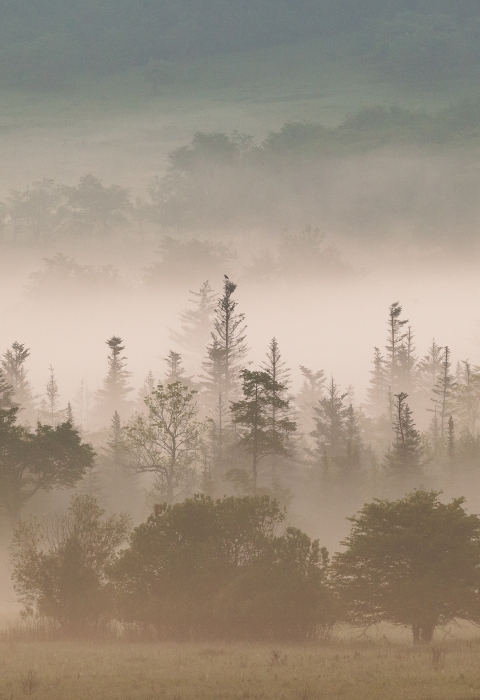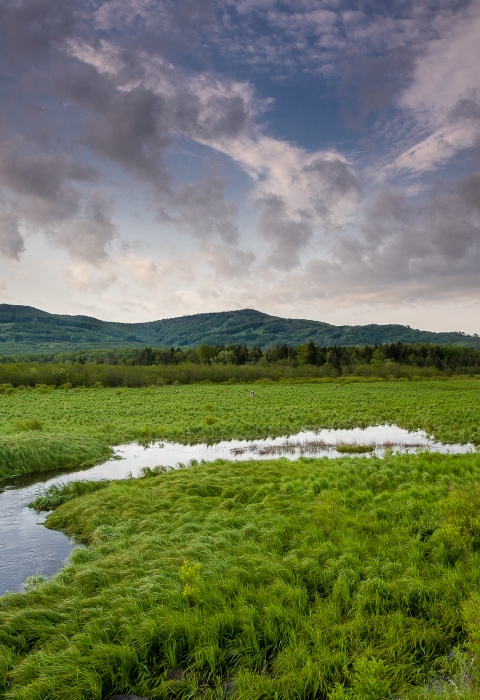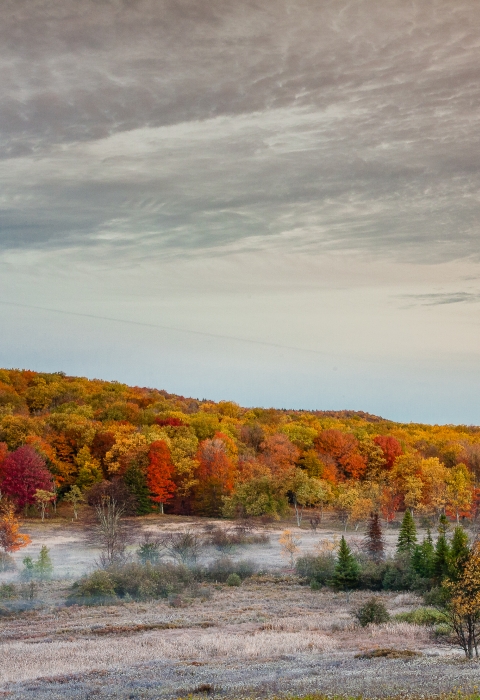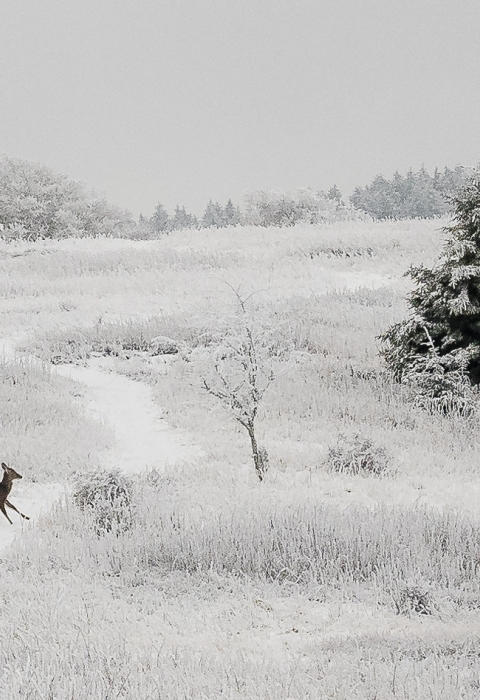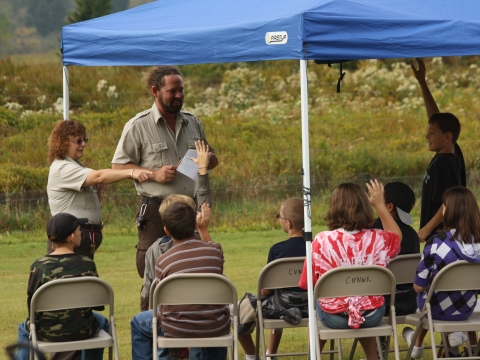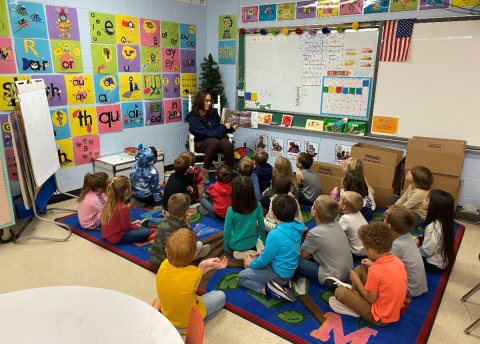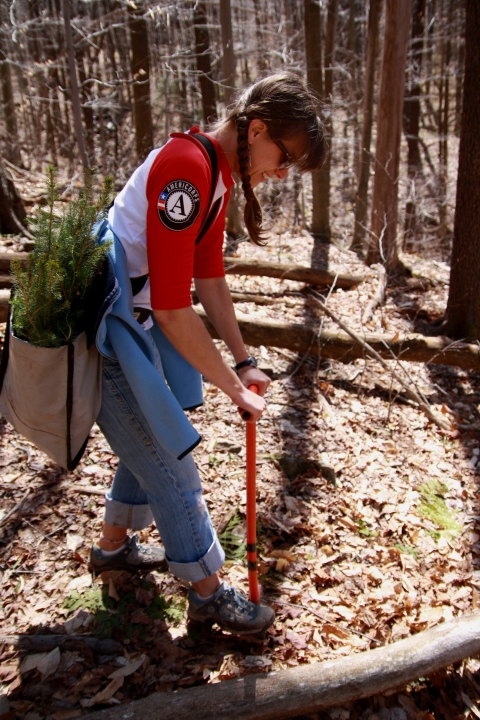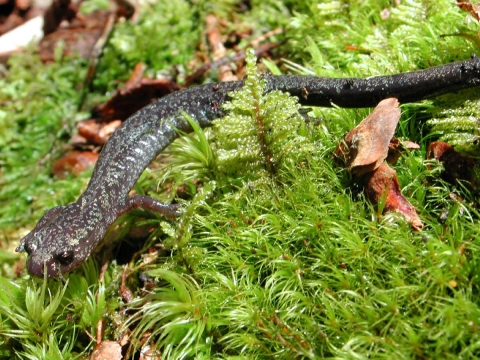What We Do
Send us an email at canaanvalley@fws.gov to learn more or get involved in any of these projects.
Interpretive Walks
Canaan Valley NWR is excited to have an interpretive walk program that offers regular guided walks at scheduled times for the community. Topics and locations vary each week, please check the Events page for up to date information on current walks. Walk topics range from broad topics, such as hibernation, beavers, and critter tracking, to specific to the refuge, such as the unique features of Freeland, protected species of Canaan Valley, and the natural history of Canaan Valley. Refuge staff and volunteers offer walks throughout the year, with winter walks taking place on snowshoes. A limited supply of snowshoes is available on a first come, first served reservation basis. To reserve snowshoes, email canaanvalley@fws.gov telling us how many pairs you will need and which walk you will be attending.
Wild School
Each spring, the refuge hosts the 6th grade classes from Tucker Valley, Davis- Thomas, and Harman schools. Wild School is an annual environmental education program that uses a combination of classroom visits and a refuge field trip to teach about wetland environments, and why they are important. Volunteers on an environmental education committee assist refuge staff in planning, classroom visits, and organizing the culminative field trip in late April/early May.
Field Trips
The refuge works with other schools on a "by-request" basis. We tailor topics and activities based on the schools request. We work with local school visits, homeschool group visits, and virtual field trips. We will work with students of all ages and mixed age groups. Please note field trip dates are based on staff and volunteer availability but we do our best to accommodate all field trip requests.
Storytime
Getting children interested in the outdoors and their local environments from a young age is important community involvement for the refuge. One program we run is Storytime, where we work with kindergarteners at Davis-Thomas School once a month to engage with them about different animals. Refuge staff will read a story to the group, followed by an organized craft activity. We are interested in expanding this program into other schools/community groups.
Management and Conservation
Tree and Shrub Planting
In Canaan Valley, fires and logging activity followed by years of grazing in some areas have created conditions not suitable for natural tree succession. In areas that were historically forested but have not regrown, refuge staff and volunteers replant native tree and shrub species. Planting events are organized during the spring and fall months and include a variety of tree and shrub species. Some species, including red spruce and balsam fir are planted to expand and connect conifer habitat for rare species including the Virginia Northern flying squirrel and Cheat Mountain salamander. In other areas, early successional species like quaking aspen and speckled alder are planted to create habitat for birds like American woodcock, Eastern towhee, brown thrasher, and field sparrow.
Invasive Species - Monitoring and Treatment
There are several non-native, invasive plant and animal species found in low numbers in Canaan Valley. These include balsam and hemlock woolly adelgid, multiflora rose, autumn olive, reed canary grass, Japanese knotweed, Japanese stiltgrass, and garlic mustard. Refuge staff closely monitor adelgid populations and are examining the possibility of using experimental treatments including beetle releases as potential future tools to battle these insects. Non-native plants on the refuge are “tracked down” by the refuge’s volunteer invasive species invasive species
An invasive species is any plant or animal that has spread or been introduced into a new area where they are, or could, cause harm to the environment, economy, or human, animal, or plant health. Their unwelcome presence can destroy ecosystems and cost millions of dollars.
Learn more about invasive species group – a group of abut 35 volunteers - and refuge interns, who survey roads, trails, and transects each year. Once these invasive plants are located, refuge staff eradicate them using a variety of methods like hand-pulling, cutting, and herbicide application.
Water Quality Surveys
Knowing and improving water quality is important for monitoring healthy environments for plants and wildlife. The refuge performs water quality surveys at various points across the refuge to monitor and track conditions in different area with the hopes of reintroducing native brook trout to streams that can support their survival. Volunteers are trained to use a YSI water quality device by refuge staff and will go out and monitor points on a regular basic, often monthly, throughout the year so we have that data. Some of the metrics tracked are temperature, pH, conductivity, and dissolved oxygen.
Cheat Mountain Salamander Surveys/Monitoring
We monitor Cheat Mountain salamanders (CMS), a federally threatened amphibian found only in West Virginia's high elevation forests. There are around 80 known populations of these lungless, terrestrial salamanders, 5 of which are found on the refuge. Our biology team does monitoring and tracking to determine movement, population growth, and overall health of the population. Please note that salamander surveys are not currently open to the public for volunteering.
Woodcock Surveys
Woodcock are a species of migratory bird that the refuge provides and creates habitat for. These birds are recognized by eyes far back on the skull and the unique peent-ing noise they make. The mating ritual of the woodcock includes an elaborate sky dance by the male to attract females. The refuge monitors population numbers by doing surveys to count how many peent-ing males can be heard in different areas of the refuge. The refuge also does woodcock banding when possible.
Grassland Management
Grasslands are crucial habitats to many species, including our native woodcock. On the refuge, we maintain our grasslands by using prescribed burning or mowing on a three year cycle. This timeline allows the grasslands to mature, but prevents shrubs and small trees from growing and changing the habitat. Prescribed burns occur in the spring, conditions permitting, and mowing occurs in the fall after the milkweed has gone to seed.
Trail Maintenance
The refuge maintains over 30 miles of trails, including a boardwalk, trails through numerous habitat types, and many bridges. One of our current major projects is building new bridges on refuge trails utilized by White Grass Ski Touring for cross country skiing and snowshoeing. These new bridges are permanent features make winter recreation safer for visitors.
Law Enforcement
U.S. Fish and Wildlife Service law enforcement officers have a wide variety of duties and responsibilities. Officers help visitors understand and obey wildlife protection laws. They work closely with state and local government offices to enforce federal, state and refuge hunting regulations that protect migratory birds and other game species from illegal take and preserve legitimate hunting opportunities. Some other duties include patrolling closed areas or Wilderness areas, maintaining relationships with neighboring landowners, maintaining refuge boundaries and participating in public events related to refuge issues.
Laws and Regulations
To protect habitat and keep Canaan Valley National Wildlife Refuge a safe place for both wildlife and people, please follow these simple rules:
